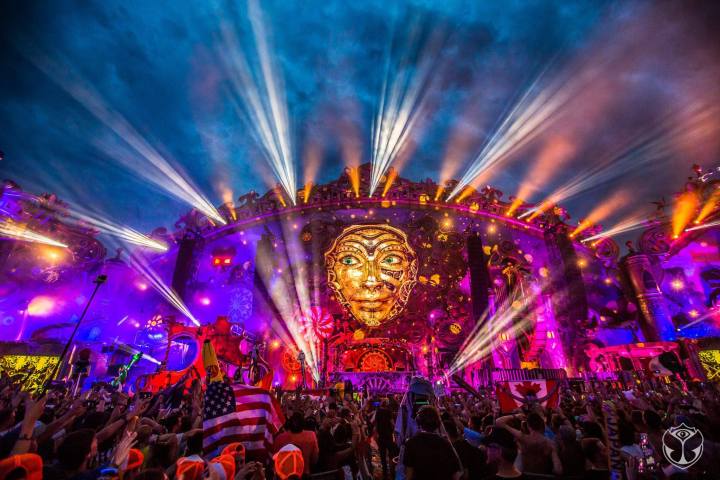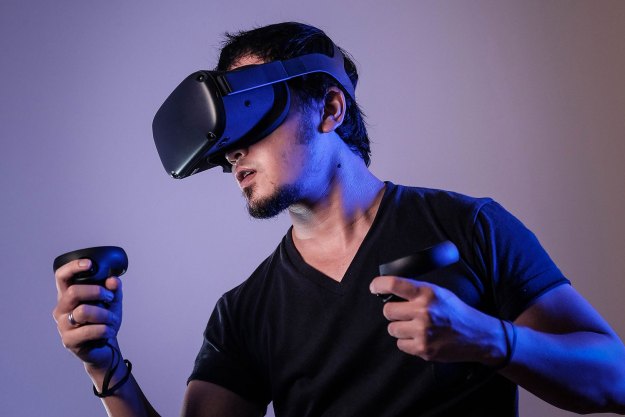
Whether it’s a book, song, video, or picture, the consumer is always limited to the perspective of that particular medium. But the scope of what you can see in VR far exceeds what is offered by every other medium. And that experience is getting transferred to VR music videos by YouVisit. I had a video chat session with YouVisit CEO Abi Mandelbaum, to discuss the possibilities and limitations put on the format by existing technology.
Approached by music industry
YouVisit has reached over six million different users with a broad selection of VR content. The company previously recorded a VR concert at TomorrowWorld 2015 with world-renowned DJ Armin van Buuren, with the resulting footage labeled The Armin Effect. “He’s one of the most prominent DJs in the world. We worked with him, his team, as well as TomorrowWorld ((a large electronic music festival held in Georgia) to produce that VR experience,” said Mandelbaum. “It allows users to engage with artists like they’ve never been able to before. In traditional video you have the director who predefines every scene and the order of those individual scenes. Our software platform allows the viewer to be the director.”
It was the company’s first dip into VR concert recordings, and got them in touch with even more of the music industry. Mandelbaum says that the company is constantly getting inquiries from different organizations across different industries. As the company isn’t focused solely on just one aspect of VR, the reach they have spans across more than the music industry. Attending events, publishing their material, and getting their work recognized is what has put them in touch with so many parts of the VR industry. Eventually that came to include the music industry. Mandelbaum said that they’ve got “more artists and labels contacting us, but we’re not disclosed to say who they are.”

Feeling the beat
When comparing a VR experience to a regular video, Mandelbaum said that you simply can’t enjoy the same level of stage presence (no pun intended) via video as you can via a VR recording. “One of the things that people enjoy the most is going backstage, or checking out what’s happening behind the scenes.”
The company put The Armin Effect on display at CES 2016 which was held from January 6-9. YouVisit showcased what it might be like to stand on stage with van Buuren. Mandelbaum said there was a lot of competition, yet the company’s creation managed to draw a lot of attention. “People said it had a unique viewpoint, and the second reason was that we converted it into a 4D experience. Obviously VR is 3D. But we added that extra dimension by placing the viewer into a chair that would vibrate and move based on the music. So as everything is going on, you’re feeling the music in your body. The floor is vibrating and everything is changing, not just the sound itself.”
Interaction
Aside from the pure technical differences between VR videos and regular videos, one of the key differences lies in the interaction. It’s one of VR’s greatest strengths, but due to limits in hardware capabilities, it’s also its weak point. In striving for the highest level of immersion via the medium, people will undoubtedly recognize how they’re restricted and want those restrictions removed. But because the hardware isn’t quite there yet, it’s impossible to deliver a fully immersive experience via VR today even if a company would like to. So it compromises.
YouVisit is prioritizing this interactivity. But how does that translate to a VR music video? Well, for now it’s rather basic, but it’s still a step beyond the interactivity in the majority of VR video content out there today (close to zero). Mandelbaum explained how the company works with its Gaze mechanic to let people transport themselves from one spot to another in VR video. “People can look around in order to use Gaze. The person might be on stage, and by gazing into the audience they have a different perspective. It’s a deeper look into the different elements of the experience. The viewer might want to learn more about the life of the artist, so they’re able to gaze into the subject in the video and automatically get taken to a different place.”
Promoting reality
So VR can be used to immerse the viewer in a music video. That makes sense. When I heard VR and music video in the same sentence, that was among the first things that came to mind. What didn’t come to mind was how it could be used to promote real-world content. Rather than thinking of VR as an enclosed box, it could be considered a node that connects to real experiences. Mandelbaum said that one of its partners, TomorrowWorld, wants to convert virtual visitors to ticket buyers.
Visiting a festival’s website, looking at its brochure, skimming through on-location recordings, and listening to the music from its different stages only gets you so far. A website is most often limited to portraying what the host wants the visitor to see, and a brochure emphasizes that marketing perspective. Skimming through recordings online might provide some idea of what a festival is like, and listening to the music might provide an idea of what artists go through over there. But the video is limited to a pointed frame, and the music can’t be heard in its true live sense. VR is limited to where the camera is placed. But. It allows enough freedom and a level of immersion that, when combined, more often than not feels more real than any other medium to whoever experiences it. If you can produce material that utilizes VR to promote a festival and manage to capture a good atmosphere overall, you’re probably more likely to convert a consumer from bystander to ticket buyer than via any other medium.
Confident
Regardless of how well VR might work in the favor of artists, publishers, and festivals, the competition is fierce. YouVisit’s venture in the virtual music arena isn’t done alone, both giants like YouTube and Apple are moving around in VR. But despite the fierce-looking competition I can’t hear a lack of confidence in the CEO’s voice. “When you think about the competition, and what will happen when YouTube goes into VR music video, all of that competition is healthy for the ecosystem. The difference between regular video sites and us is that we can offer a whole different level of interactivity.”
Editors' Recommendations
- This new VR headset beats the Vision Pro in one key way and is half the price
- You really do not want to forget your Vision Pro passcode
- The next Vision Pro could let you see invisible energy
- The Apple Vision Pro has given VR its iPhone moment
- Apple’s VR headset has no killer app, prominent leaker warns

